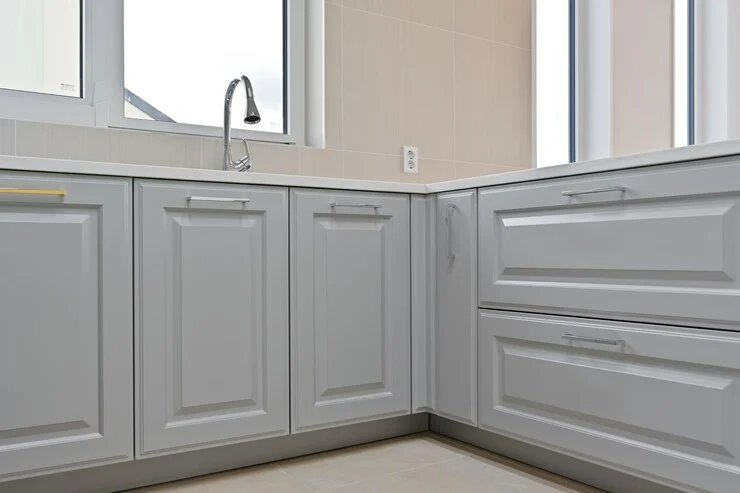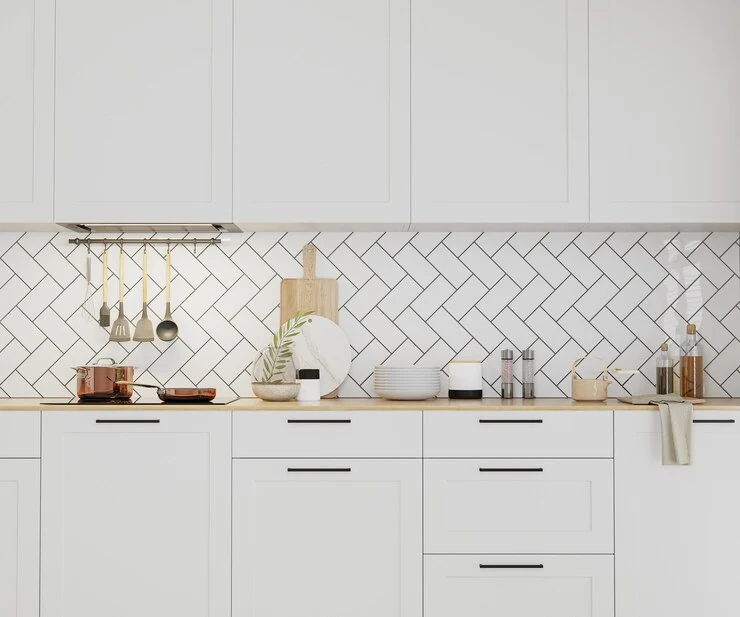Wondering how to prevent painted cabinets from chipping? Painted cabinets transform any kitchen or bathroom. They add a fresh and stylish look. Chipping paint is a common issue. It makes even beautiful cabinets look worn and outdated. Luckily, there are easy ways to stop your painted cabinets from chipping and keep them looking new for years. This guide covers the best ways to maintain your cabinets. It helps ensure their durability.
Why Does Paint Chip on Cabinets?
Before learning how to prevent painted cabinets from chipping, it’s important to know the causes. Chipping happens for several reasons. Here are some of the main reasons:
- Poor Surface Preparation: If cabinets aren’t cleaned and sanded properly, the paint won’t stick. It may start peeling quickly.
- Skipping Primer: Primer helps the paint adhere better and last longer. Without it, chipping is more likely.
- Using Low-Quality Paint: Cheap paints have weaker adhesion. This makes them more prone to peeling.
- Moisture and Humidity: Kitchens and bathrooms have high humidity. This can cause paint to bubble and peel over time.
- Frequent Use and Friction: Constantly opening and closing cabinet doors wears down the paint. This is especially true if they lack knobs or handles.
- Harsh Cleaning Chemicals: Strong cleaning agents and rough scrubbing can strip paint layers. This leads to chipping.
Now that we know why paint chips, let’s explore the best ways to prevent it.
Choose the Right Paint for Long Lasting Results
Not all paints are the same, and choosing the right one is very important to ensure durability.
- Use high-quality acrylic or alkyd paint: These adhere well. They last longer than regular latex paint.
- Opt for enamel-based paint: This type of paint is tougher and more resistant to chipping.
- Consider oil-based paints: They take longer to dry. However, they create a harder, more durable surface that withstands wear and tear.
Prepare Cabinets Properly Before Painting
Proper preparation is key to achieving a flawless and long-lasting finish. Here’s what you need to do:
- Clean the surface thoroughly using a degreaser to remove dirt, grease, and grime.
- Sand the cabinets with fine-grit sandpaper (220-grit). This makes the surface rougher, helping the paint stick better.
- Fill any cracks, holes, or imperfections with wood filler, then sand again for a smooth finish.
Apply a High-Quality Primer
Skipping primer is a big mistake when painting cabinets. A high-adhesion bonding primer helps the paint stick. It also prevents peeling or chipping.
- Choose an oil-based or shellac-based primer for maximum durability.
- Apply two coats of primer and allow each layer to dry completely before painting.
Use the Right Painting Technique
Applying paint correctly can make a huge difference in preventing chips and cracks.
- Apply Thin, Even Coats: Thick layers take longer to dry and are more prone to peeling.
- Use a High-Quality Brush, Roller, or Spray Gun: These tools help achieve a smooth, professional finish.
- Allow Each Coat to Dry Completely: Rushing the process can lead to uneven layers that chip easily.
Seal with a Protective Topcoat
A clear topcoat acts as a protective shield against wear and tear.
- Use a polyurethane or polycrylic sealant to increase durability.
- Apply multiple thin layers for better protection.
- Choose a satin or semi-gloss finish for easy cleaning and long-lasting protection.

Avoid Harsh Cleaning Products
Using abrasive cleaners can weaken the paint and lead to chipping.
- Use mild soap and water for regular cleaning instead of harsh chemicals.
- Avoid ammonia or bleach-based cleaners as they degrade the paint over time.
- Use a soft microfiber cloth instead of rough sponges to avoid scratching the paint.
Handle Cabinets with Care
Daily use can wear down the paint over time, so handle your cabinets gently to extend their lifespan.
- Avoid slamming doors and drawers, as repeated impact can cause the paint to crack.
- Install soft-close hinges to reduce wear and tear.
- Use cabinet hardware like knobs and pulls. This prevents direct contact with painted surfaces, reducing friction and chipping.
Control Humidity and Moisture Levels
Excess moisture can cause paint to bubble, peel, or chip over time.
- Use a dehumidifier in humid climates to maintain optimal indoor moisture levels.
- Ensure proper ventilation in kitchens and bathrooms to prevent moisture buildup.
- Wipe up spills immediately to prevent water from seeping into the painted surface.
Perform Regular Maintenance and Touch-Ups
Consistent care can extend the life of your painted cabinets and keep them looking fresh.
- Touch up minor chips immediately with matching paint to prevent further damage.
- Inspect cabinets regularly for signs of wear and take preventive action.
- Reapply a protective topcoat every few years to maintain durability.
Consider Professional Help for Best Results
If you want a flawless, long-lasting finish, hiring a professional painter can be a great option.
- Professionals use advanced techniques like spray-painting. This gives a smoother and longer-lasting finish.
- They have access to high-quality materials that ensure longevity.
- A professional job reduces the need for frequent touch ups. It also saves time and effort in the long run.
Conclusion
Preventing chipping requires proper preparation. The right materials and regular maintenance are also essential. To learn how to prevent painted cabinets from chipping, follow these simple steps. Choose high-quality paint, prep surfaces properly, use protective topcoats, and handle cabinets carefully. This will give you a beautiful and durable cabinet finish for years. Invest in the right approach today. Your cabinets will remain a stunning feature of your home for a long time.
